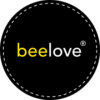Understanding and caring for your local raw honey
Honey is an amazing gift of nature. Like all natural products, there is a reason for the variations you see throughout the year.
Honey bees produce honey of various hues or colors. This variation in color and flavor is not because of the type of honey bee, but is strongly dependent instead on the flowers visited by honey bees in the colony.
The color of honey can range from nearly colorless to dark brown.
Lighter honey derives from summer flowers, while darker honey comes from fall flora, fruits and seeds that the honey bees pollinate. Honey flavor, in addition, varies from mild to bold.
As a general rule, dark-colored honey has a stronger, bolder taste than its light-colored counterpart. Dark-colored honey has a higher concentration of beneficial antioxidants as well.
Regardless of the flavor and color, local raw honey is a delicious sweetener. You can use it to supplement sugar — in your tea, in a cake or in your favorite barbecue sauce!
Because honey contains sucrose, pure or unpasteurized honey is sensitive to changes in temperature. Crystallization of the sugar molecules in honey is a natural phenomenon. It happens in cooler temperatures.
Preventing crystallization
Keep your honey at a temperature of 57 degrees Fahrenheit or higher. The best temperature is at 70 – 80 degrees Fahrenheit. As a concentrated form of nectar, honey thrives in summery temperatures, perhaps just like you!
However, unpasteurized or raw honey can degrade in flavor and color when stored in direct sunlight or places with extreme fluctuations in temperature. A pantry cabinet is perfect.
Reversing crystallization
Did your honey turn solid or change in consistency texture or color?
Don’t worry, it’s still good! Pure honey has an unlimited shelf life. It doesn’t require refrigeration and it doesn’t expire.
If you want to restore your honey to its flowing state, simply place the jar in a bowl or pan with warm water of 80 degrees approximately. You will witness the crystals “melt” and the honey return to its consistent color and texture!
Gentle warming is critical to maintaining all the beneficial properties of raw, natural honey. So keep the temperature below 112 degrees Fahrenheit to prevent loss of “free radical fighting” antioxidants.
Enjoying your honey, naturally
Our beelove® honey is Certified Naturally Grown. Over the year, you’ll see variations in color and texture as our bees visit the different flowers that provide them pollen.
In cooler months of the year, your honey may crystallize.
